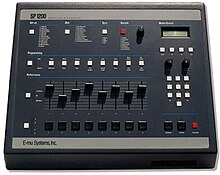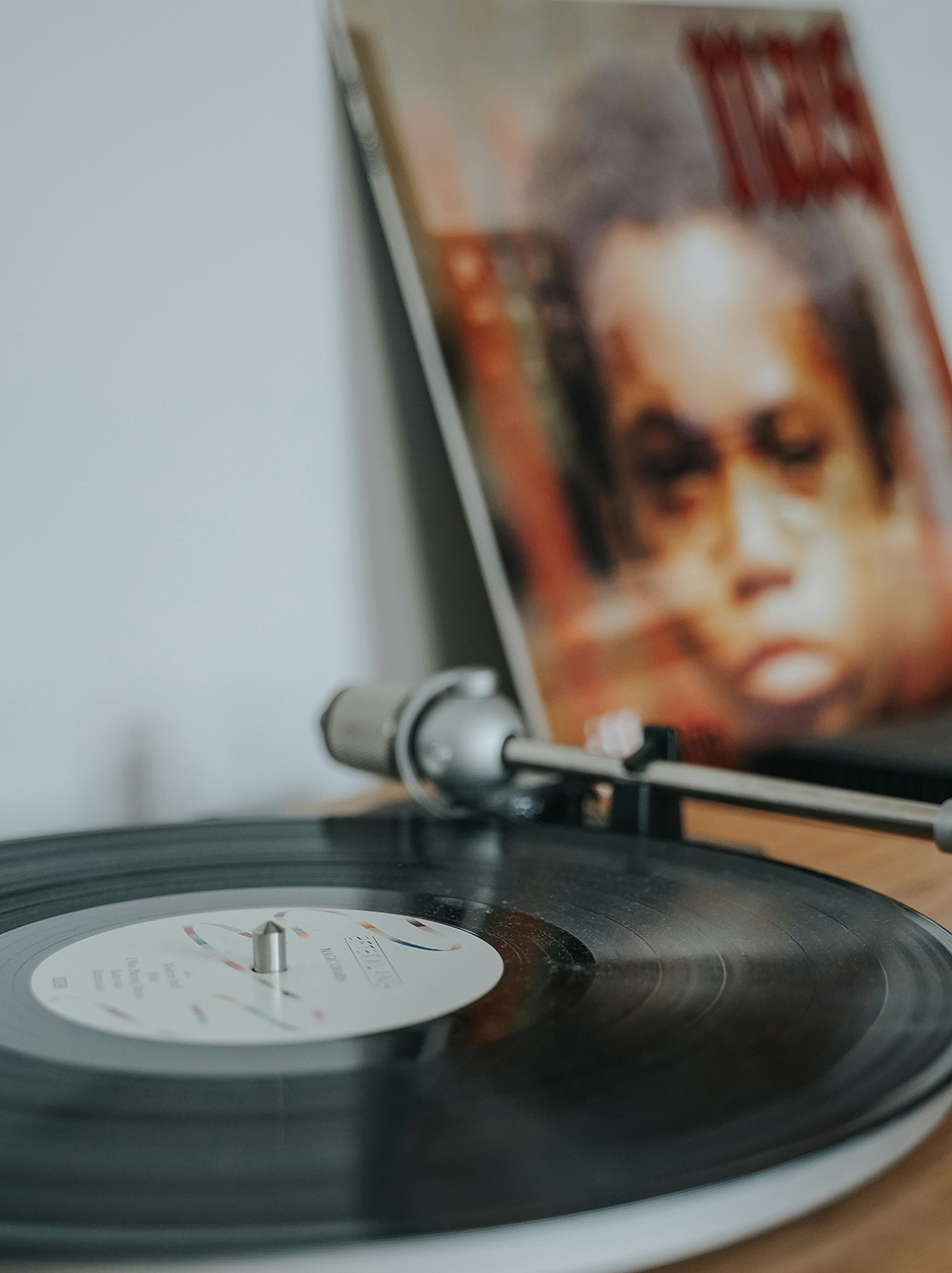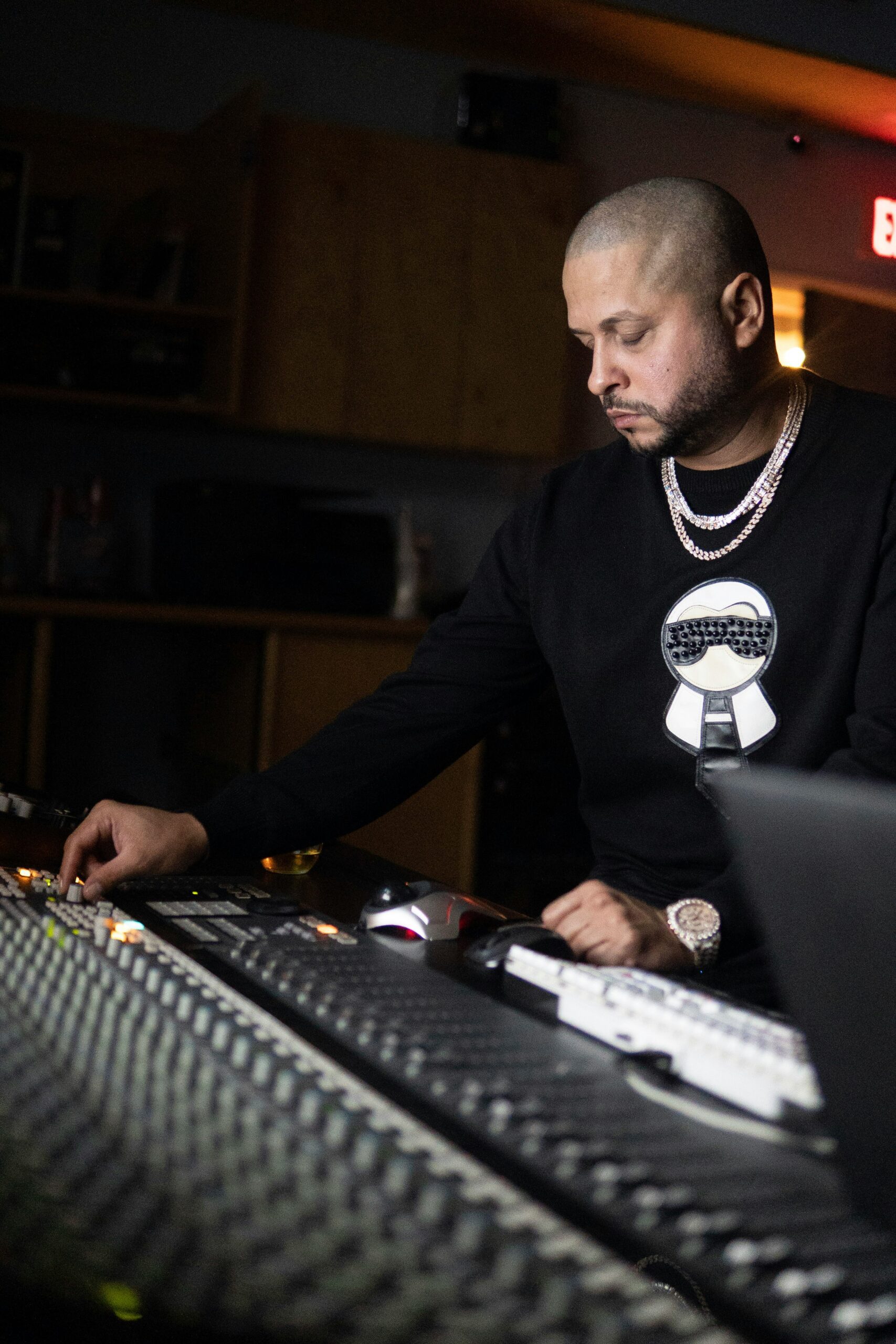Known for its rhythmic spoken-word delivery and heavy beats, rap/hip-hop has evolved into a global phenomenon encompassing various subgenres, lyrical styles, and cultural expressions.
Subgenres of Hip Hop
History of Rap Music
Famous Hip Hop Artists
Famous Hip Hop Producers
Famous Hip Hop Audio Engineers
Production & Mixing Tips
Subgenres of Hip Hop
Trap
Known for its heavy use of 808 bass, layered synths, and aggressive lyrics, trap music originated in the Southern United States and has gained global popularity. Artists like Gucci Mane, Future, and Migos are associated with this subgenre.
Boom Bap
This subgenre is characterized by its gritty, sample-based production, hard-hitting drum beats, and conscious lyrical content. Artists like Nas, Wu-Tang Clan, and A Tribe Called Quest are associated with the boom bap sound.
Conscious Hip-Hop
Also known as political rap or socially conscious rap, this subgenre focuses on addressing social issues, inequality, and raising awareness. Artists like Kendrick Lamar, J. Cole, and Common often delve into thought-provoking topics within their music.
Mumble Rap
This controversial subgenre is characterized by its emphasis on melodic flows, repetitive hooks, and lyrics that may be difficult to decipher. Artists like Lil Uzi Vert, Future, and Playboi Carti are often associated with mumble rap.
Alternative Hip-Hop
This subgenre pushes the boundaries of traditional rap/hip-hop, incorporating elements from other genres like rock, electronic, or jazz. Artists like Tyler The Creator, Kid Cudi and Anderson Paak are known for their innovative and genre-blending approach.
Drill
Originating in Chicago, drill music is characterized by its aggressive lyrics, dark, menacing beats, and rapid-fire delivery. Artists like Chief Keef, Lil Durk, and Pop Smoke have popularized the drill sound.
Gangsta Rap
This subgenre emerged in the 1980s and emphasizes the realities of street life, violence, and gang culture. Artists like N.W.A, Snoop Dogg, and 50 Cent are synonymous with the gangsta rap movement.
History of Rap Music
Rap/hip-hop originated in the 1970s as a form of expression and storytelling, reflecting the experiences and struggles of African-American communities, particularly in the bustling streets of New York City. The genre found its roots in the neighborhoods of the Bronx, where DJs like Kool Herc and Grandmaster Flash played a pivotal role in its development.
In its early days, rap/hip-hop focused on three essential elements: MCing (Master of Ceremonies), DJing (Disc Jockeying), and B-boying (Breakdancing). MCs, or rappers, would deliver intricate rhymes and poetic verses over beats provided by DJs, who skillfully mixed and scratched vinyl records to create unique soundscapes. Meanwhile, B-boys and B-girls showcased their impressive dance moves, adding a visual element to the performances.

The Gear That Shaped Hiphop

The Roland TR-808
The iconic TR-808 drum machine revolutionized hip-hop with its distinct booming bass and crisp percussion sounds. Its deep, punchy kick drum and snappy snares became the backbone of countless rap tracks, shaping the genre’s rhythmic foundation and giving birth to the booming sub-bass sound that defined hip-hop in the ’80s and beyond.

The Technics SL-1200
The Technics SL-1200 turntable holds legendary status in hip-hop culture. Its precision engineering and durability made it the go-to choice for DJs and turntablists, allowing them to scratch, cut, and manipulate vinyl records with unparalleled control. The SL-1200’s smooth pitch control and reliable performance became synonymous with the art of DJing, influencing the development of hip-hop’s signature scratching and mixing techniques.

The E-mu SP-1200
The E-mu SP-1200 sampler (from 1987) is a legendary piece of gear that shaped hip-hop. Its gritty, lo-fi sound and unique sampling capabilities allowed producers to chop, loop, and manipulate samples, creating the signature sound of sampled drums and chopped-up vocal samples. The SP-1200’s limited sample time and iconic crunchy sound became a hallmark of classic hip-hop production, influencing generations of producers and artists. The Akai MPC series (from 1988) also played a significant role in hip-hop’s evolution.

Famous Hip Hop Artists
As rap/hip-hop grew in popularity, it spread beyond the streets of New York and gained recognition across the United States. The genre’s influence expanded, leading to the emergence of famous artists who helped shape its evolution.
In the 1990s, artists like Run-D.M.C., Tupac Shakur, and The Notorious B.I.G. became cultural icons, using their lyrics to address social issues, tell personal stories, and push artistic boundaries. Their contributions laid the foundation for the genre’s future success.
Moving into the 2000s, Jay-Z rose to prominence as one of the most influential and successful rap artists of all time. With his unique storytelling ability and business acumen, he solidified his status as a modern legend.
In the 2010s, Kendrick Lamar emerged as a dominant force in rap/hip-hop. Known for his introspective lyrics and intricate wordplay, Lamar pushed the boundaries of the genre, earning critical acclaim and multiple Grammy Awards.
As we enter the 2020s, Cardi B has become a prominent figure in rap/hip-hop. With her unapologetic lyrics and charismatic personality, she has made a significant impact on popular culture and continues to shape the genre’s landscape.
Three Sonic Qualities of Hip Hop
Beats and Rhythm
The beats and rhythm of hip-hop music are its sonic backbone, providing the framework upon which all other elements are built. Hip-hop beats often involve the use of drum machines, synthesizers, and samples, blending traditional musical elements with modern technology to create something entirely new.
Sonic Density
Sonic density refers to how clearly individual instruments can be heard in a record relative to other instruments. In early hip-hop, each conventional instrument (drums, bass, guitar, piano) is discernible, while the drum machine/sequencer era features sparser production with a few drum elements, synthesizer elements, and prominent vocals.
Vocal Delivery
The vocal delivery in hip-hop has evolved over time. In the early days, MCs often used call and response chants and incorporated brief rhymes with a variety of vocal and rhythmic delivery styles. The raw emotion and performative nature of hip-hop allow artists to convey their messages and stories with clarity and intensity.

Famous Hip Hop Producers
Famous hip-hop producers have played a vital role in shaping the genre’s sound and pushing its boundaries. Each producer brings their unique style and artistic vision to the table, resulting in distinct sonic landscapes that have become synonymous with their names.
One legendary hip-hop producer is Dr. Dre. Known for his iconic G-funk sound, Dre’s productions have a smooth and laid-back feel, characterized by deep basslines, funky melodies, and soulful samples. His meticulous attention to detail and ability to create infectious grooves have made him a pioneer in the genre.
Another influential producer is J Dilla, whose style is revered for its soulful and off-kilter approach. Dilla’s productions often feature chopped-up samples, intricate drum patterns, and a unique sense of swing. His use of unconventional time signatures and layering of obscure samples has cemented his status as one of the most innovative producers in hip-hop history.
Pharrell Williams is another notable producer who has left an indelible mark on hip-hop. Known for his eclectic and genre-blurring style, Pharrell’s productions are characterized by catchy melodies, funky rhythms, and a blend of electronic and organic elements. His ability to create infectious hooks and memorable beats has made him a sought-after collaborator across various genres.
Timbaland is renowned for his innovative and futuristic production style. His use of unconventional sounds, syncopated rhythms, and intricate drum patterns has set him apart from his peers. Timbaland’s productions often incorporate elements of R&B, pop, and electronic music, resulting in a distinct and forward-thinking sound that has influenced countless producers.
Three Production Tips & Techniques for Hip Hop
Layering and Variation
One effective technique in hip-hop production is layering sounds to create depth and complexity. For example, layering different drum samples can result in a punchier and more unique drum sound. Additionally, varying the attack, sustain, release, and other parameters of each layer can create interesting textures and dynamic changes within the beat. Experimenting with layering and variation can help your productions stand out and sound more engaging.
Creative Sampling
Sampling is a fundamental aspect of hip-hop production. It involves taking snippets of existing music and incorporating them into your own compositions. To make your samples more unique, try chopping them up, rearranging them, and applying effects to create new and interesting sounds. This technique allows you to add your own artistic touch while paying homage to the rich history of hip-hop sampling.
Sound Placement and Effects
Paying attention to sound placement and using effects strategically can greatly enhance your hip-hop productions. For example, using reverb and delay on melodies and background samples can create a sense of space and depth, while keeping the vocals and bass clear and prominent in the mix. Additionally, panning sounds across the stereo field can create a wider and more immersive listening experience. Experimenting with different effects and spatial placement can add dimension and polish to your tracks.
Famous Hip Hop Audio Engineers
In the world of hip-hop, audio engineers play a crucial role in shaping the sound that defines the genre. These talented individuals are the wizards behind the mixing boards, responsible for creating the sonic landscapes that bring hip-hop tracks to life. One such legendary figure in the field is Young Guru. Known for his work with Jay-Z, Young Guru has been an integral part of the hip-hop scene since the 1990s. His meticulous attention to detail and keen ear have earned him a reputation as one of the industry’s most sought-after audio engineers. With a discography that includes iconic albums like “The Blueprint” and “The Black Album,” Young Guru’s contributions have left an indelible mark on the genre.
Another notable audio engineer in hip-hop is Manny Marroquin. With a career spanning over two decades, Marroquin has worked with a diverse range of artists, including Kanye West, Eminem, and Rihanna. Known for his distinctive mixing style, Marroquin has a knack for finding the perfect balance between the raw energy of hip-hop and the polished sheen of pop. His innovative approach to mixing has earned him numerous accolades, including multiple Grammy Awards. From his work on West’s groundbreaking album “My Beautiful Dark Twisted Fantasy” to his contributions to Eminem’s “Recovery,” Manny Marroquin’s expertise has helped shape the sound of modern hip-hop.

Three Mixing & Mastering Tips for Hip Hop
Reference Tracks
Start by finding three to five similar tracks that you think sound great. Use these tracks as a reference to guide your decisions while mixing and mastering. Pay attention to the balance of instruments, the clarity of vocals, and the overall sonic characteristics. Referencing can help you achieve a sound that is competitive and consistent with other successful hip-hop tracks.
Pay Attention to Dynamics
Hip-hop tracks often have a wide dynamic range, with exaggerated lows and highs. It’s important to find the right balance without making the mix sound muddy or harsh. Use techniques like compression and EQ to control the dynamics and ensure that each element of the mix sits well together. Experiment with different settings to achieve a balanced and impactful sound.
Focus on Vocal Clarity
In hip-hop, vocals play a central role. It’s crucial to ensure that the vocals are clear, intelligible, and well-balanced with the instrumental elements. Use techniques like EQ, compression, and automation to enhance the presence and clarity of the vocals. Pay attention to the frequency range of the vocals and make adjustments to ensure they cut through the mix effectively.
Why Hire a Professional Audio Engineer or Producer for Mixing and Mastering Rap / Hiphop?
While it is possible to learn and do mixing and mastering hiphop yourself, hiring a professional can provide a level of expertise, objectivity, and efficiency that can greatly benefit your hip-hop music production.
Expertise and Experience
Professional engineers and producers have extensive knowledge and experience in working with hip-hop music. They understand the genre’s specific requirements, such as achieving the right balance between the beats, vocals, and other elements, and creating a polished and cohesive sound.
Technical Skills
Mixing and mastering involve intricate technical processes, including EQing, compression, balancing levels, stereo imaging, and adding effects. Professional engineers have the technical skills and tools to enhance the clarity, depth, and overall quality of the music, ensuring it sounds professional and competitive.
Objective Perspective
Hiring a professional provides an objective perspective on your music. They can identify areas that need improvement, offer creative suggestions, and help bring out the best in your tracks. Their fresh ears and expertise can elevate your music to a higher level.
Quality Equipment and Tools
Professional engineers and producers have access to high-quality equipment, software, and plugins that can enhance the sound and bring out the best in your music. They know how to utilize these tools effectively to achieve the desired sonic results for your rap song.
Time and Efficiency
Mixing and mastering can be time-consuming and require attention to detail. By hiring a professional, you can save time and focus on other aspects of your music career while knowing that your tracks are in capable hands. Professionals have streamlined workflows and efficient processes to deliver timely and high-quality results.